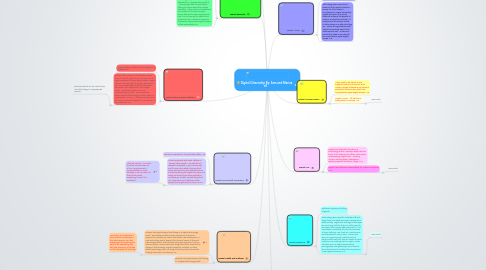Digital Citizenship By: Sam and Marina 8E
저자: 8E_EMarina 29669


1. Digital Health and Wellness
1.1. Physical and psychological well-being in a digital technology world. Eye safety, repetitive stress syndrome, and sound ergonomic practices are issues that need to be addressed in a new technology world. Beyond the physical issues of those of psychologist issues that are becoming more prevalent such as internet action. Users need to be taught that there inherent the dangers of technology. Digital citizenship includes a culture where technology users are taught how to protect themselves through education and training. S.E
1.1.1. We could: We could have a timer next to our laptop so that after about a hour the buzzer goes off meaning it is time to do something, this will help remid you nt to stay on the computer all day long.
1.2. physical and psychological well-being in a digital technology world.
2. Digital Rights & Responsibilities
2.1. Those freedoms extended to everyone in a digital world.
2.2. Just as in the American Constitution where there is a Bill of Rights, there is a basic set of rights extended to every digital citizen. Digital citizens have the right to privacy, free speech, etc. Basic digital rights must be addressed, discussed, and understood in the digital world. With these rights also come responsibilities as well. Users must help define how the technology is to be used in an appropriate manner. In a digital society these two areas must work together for everyone to be productive. S.E
2.2.1. what we should do: we could try to use technology in a appropriate manner
3. Digital Security(self protection)
3.1. Electronic precautions to guarantee safety. M.E
3.2. There are people who steal, deface or disrupt other people . You should not always trust people in your community just for your own safety. Like we do at home set alarms for our safety the same should be done with digital security.or our safety we should have virus protection and backups of data. we should protect our information and data from other people that might want to harm us.M.E
3.2.1. What we can do : We could at school and at home on all our computers set a virus protection a nd do backups on all our data.We should also check everything to see if it is protected
4. Digital Etiquette
4.1. Electronic standards of conduct or procedure.
4.2. Technology users often see this area as one of the most pressing problems when dealing with Digital Citizenship. We recognize inappropriate behavior when we see it, but before people use technology they do not learn digital etiquette (i.e., appropriate conduct). Many people feel uncomfortable talking to others about their digital etiquette. Often rules and regulations are created or the technology is simply banned to stop inappropriate use. It is not enough to create rules and policy, we must teach everyone to become responsible digital citizens in this new society. S.E
5. Biography-http://www.digitalcitizenship.net/Nine_Elements.html
6. Digital Law
6.1. Digital law deals with the ethics of technology within a society.People need to know that hacking into others information, downloading illegal music , creating viruses, sending spam messages or stealing anyones identify is a legal. M.E
6.2. Digital Law-electronic responsibility for actions and deeds M.E
6.2.1. New node
7. Digital Access
7.1. Full electronic participation in society
7.2. Technology users need to be aware of and support electronic access for all to create a foundation for Digital Citizenship. Digital exclusion of any kind does not enhance the growth of users in an electronic society. All people should have fair access to technology no matter who they are. Places or organizations with limited connectivity need to be addressed as well. To become productive citizens, we need to be committed to equal digital access. S.E
8. Digital commerce
8.1. Electronic buying and selling of goods
8.2. Technology users need to understand that a large share of market economy is being done electronically. Legitimate and legal exchanges are occurring, but the buyer or seller need to be aware of the issues associated with it. The mainstream availability of internet purchases of toys, clothing, cars, food atc. Has become commonplace to many users. At the same time, an equal amount activities such as illegal conflict with the laws or marals of osme countries are surfacing (which might include activities such as illegal downloading, pornography, and gambling) Users need to learn about how to be effected consumers in a new digital economy. S.E
8.2.1. New node
9. Digital Communication
9.1. Users need to be aware of and support electronic access for all to create a Digital Citizenship.To become productive citizens, we need to be committed to equal digital access. M.E
9.2. Digital Access: full electronic participation in society. M.E
9.2.1. New node
10. Digital Literacy
10.1. Process of teaching and learning about technology and the use of technology M.E
10.2. As new technologies emerge, learners need to learn how to use that technology quickly and appropriately. Digital Citizenship involves educating people in a new way. Schools teach children how to use technology and how to use it correctly. M.E
10.2.1. what we could do- what we could do is try and learn more about technology in the correct way and in PLC the teachers could also teach us more about it.
